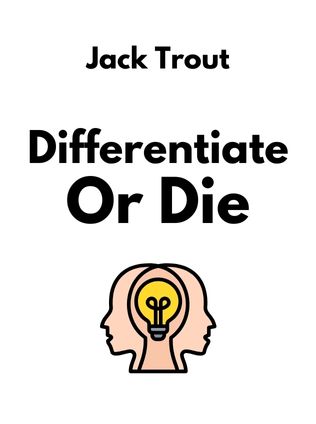
Differentiate or Die
Survival in Our Era of Killer Competition
By Jack Trout
Published 03/2008
About the Author
Jack Trout, the president of the prestigious marketing firm Trout & Partners, is a trailblazer in the world of marketing strategy. He is widely recognized for popularizing the concept of "positioning," which is the strategic process of placing a brand or product in the minds of consumers in a way that distinguishes it from competitors. With over 30 years of experience advising Fortune 500 companies, Trout has become a thought leader in the field, known for his practical and impactful approaches to business differentiation.
Trout's collaborator, Steve Rivkin, is the co-author of several influential books with Trout, including "The New Positioning" and "The Power of Simplicity." Rivkin heads his own communications firm and brings a wealth of expertise in branding and marketing communication. Together, Trout and Rivkin have crafted strategies that help businesses carve out unique niches in competitive markets.
Main Idea
The main premise of "Differentiate or Die" revolves around the crucial need for businesses to differentiate themselves in an era of intense competition and overwhelming consumer choice. Trout and Rivkin argue that companies must establish a unique selling proposition (U.S.P.) and continuously innovate to maintain their market positions. Differentiation, they assert, is not merely about creativity but involves a logical, strategic approach to make a brand stand out and appeal to specific consumer needs.
Table of Contents
- The Tyranny of Choice
- Losing and Reinventing the U.S.P.
- What Differentiation Is Not
- The Four Steps to Differentiation
- Eight Successful Differentiation Strategies
- Growth and Sacrifice in Differentiation
- Being Different in Different Places
- Who's in Charge Here?
The Tyranny of Choice
In today's marketplace, consumers are bombarded with nearly one million branded products, creating an environment where choice is overwhelming. Trout and Rivkin describe this phenomenon as the "tyranny of choice." The average supermarket stocks around 40,000 brand items, but a typical family purchases only 150 SKUs regularly. This explosion of choice means that companies must find ways to stand out amid the noise.
Trout outlines three critical ways companies must address differentiation to survive:
- Emphasize Uniqueness: Companies must focus on what makes them unique and avoid trying to be everything to everyone, which dilutes their distinctiveness.
- Adapt to Market Changes: Businesses need to stay attuned to market trends and adjust their differentiation strategies accordingly to remain relevant.
- Establish Strong Differentiation: Companies that do not assert their uniqueness will remain overshadowed by larger competitors.
The concept of differentiation is essential in a world where consumer decisions are influenced by numerous factors, including intuition, logic, emotions, and sensory perceptions. Businesses must cater to these diverse decision-making processes to capture and retain customer interest.
Losing and Reinventing the U.S.P.
Rosser Reeves introduced the concept of the Unique Selling Proposition (U.S.P.) in his 1960 book, "Reality in Advertising." A U.S.P. communicates a specific benefit to the consumer that competitors do not offer, creating a unique appeal. However, in the contemporary market, maintaining a U.S.P. has become increasingly challenging due to rapid technological advancements and the proliferation of similar products.
Trout and Rivkin identify three primary reasons why sustaining a U.S.P. is difficult today:
Sign up for FREE and get access to 1,400+ books summaries.
You May Also Like
The Lean Startup
How Today's Entrepreneurs Use Continuous Innovation to Create Radically Successful Businesses
By Eric RiesWho Moved My Cheese?
An Amazing Way to Deal with Change in Your Work and in Your Life
By Spencer Johnson, M.D.Make Your Bed
Little Things That Can Change Your Life...And Maybe the World
By William H. McRavenThe Ride of a Lifetime
Lessons Learned from 15 Years as CEO of the Walt Disney Company
By Robert Iger



















